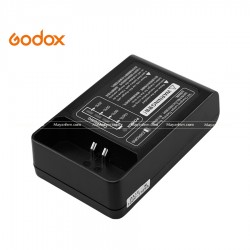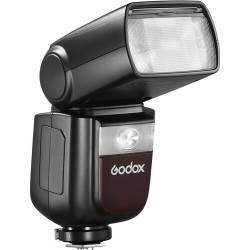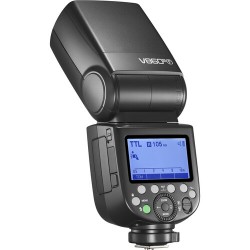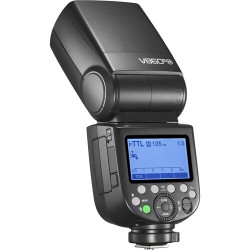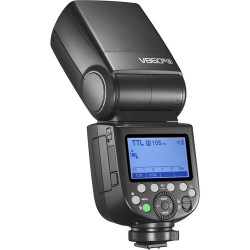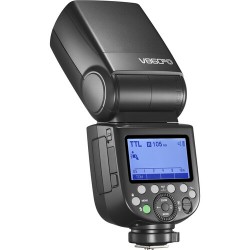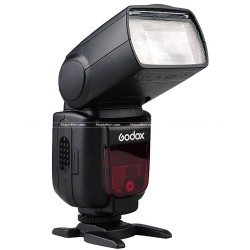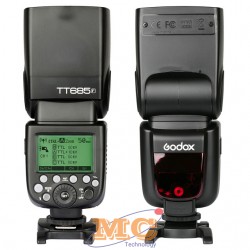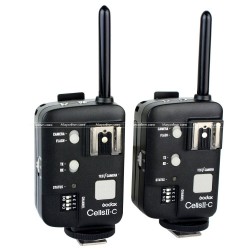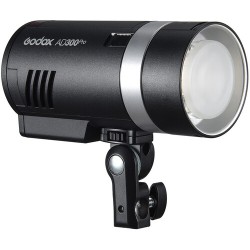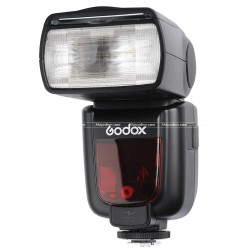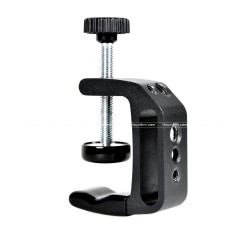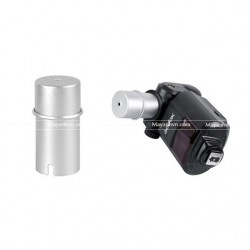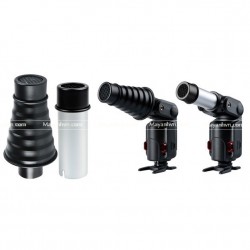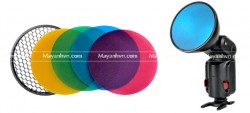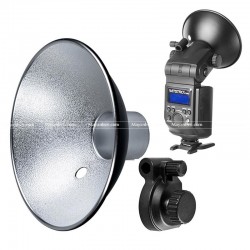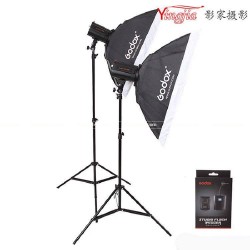UPDATE 4-26-16
I have written a short article about the power difference between the AD600 and attaching the H600 remote head. That post can be found here.
UPDATE 4-24-16
I had the opportunity to use my Godox AD600 with the remote head and HSS. Wonderful gear which allows so many creative opportunities!

Outdoor environmental shot. Canon 1DX, Canon EF85mm f1.2 lens. Single AD600 with remote head using a Bowens Maxlite 8″ cone reflector. 1:1 power shot at 1/1250th f5.0 ISO 160 Focal length 47mm. Wanted to reduce ambient.

Canon 1DX, EF85mm 1.2 lens. f2.5. Single AD600 with remote head shot through a SMDV 27″ octabank with both diffusion panels installed. Power set at 1/32nd. 1/1600th f2.5.
UPDATE 4-21-16
The Godox remote head is FANTASTIC! I only wish the cord was another three feet long. Beyond that, bravo Godox!

The battery/power unit makes for a fantastic ballast of weight.
UPDATE 4-18-16
Today I received the AD600’s remote head. In a later update I will report my findings. My stats are the unit weighs 1.8 pounds not including the 9 foot cord. I will also be ordering the remote head which will produce 1200ws when combining two AD600 units. I am so impressed with Godox’s innovation with these units.

AD600 remote head, side view. The silver circle is a US quarter for scale.

Front view. The small rectangle under the left plug in is the locking socket for the connecting plug.
UPDATE 4-10-16
I conducted my first commercial shoot with all Godox lights. After a lot of testing I felt comfortable enough to use them in prime time for a client’s new marketing campaign. I used a three light setup for this shot, two AD360s and one AD600. All are manual with no TTL since I don’t use TTL devices. The only light you cannot see in the BTS photo is the AD360 I used behind the talent to illuminate the curtain’s texture. The inverted octabox on the right is a CheetahStand 90cm octa which I have modified to be an inverse type with a focusing rod. You can read more about that here.

AD600 as a fill and focusing light shot through a Phottix folding beauty dish with diffuser attached. AD360 inside the CheetahStand 90cm with focusing rod. Third light, an AD360 is located behind the talent with a cone and 50 degree grid.

The specularity and softness resulting from inverted softboxes is now my main preference for modifiers.
UPDATE 3-22-16
I stopped photographing weddings long ago. But a very close friend of mine asked me to do her engagement imagery so what could I say to her besides “sure”? She had been my fashion and artistic nude model for years. Anyway I had the opportunity to use the AD600 in HSS mode and since I’m not bound by any NDAs I can share this one with you. Shot at just after midday you can see how effectively the AD600 works. Canon 1DX, 1/4000th at f4.0. Shot through a mangled PCB Omni 18″ reflector, which still works fine. It’s just ugly now… The high key image was backlit using the AD600 bare bulb through white fabric and the key light was an AD360 shot through a white folding beauty dish. I’m finding the Godox AD line of lights excellent in performance as well as convenience.

AD600, Canon 1DX 1/4000th, f4.0, ISO 100, AD power 1:1. Modifier is a PCB Omni 18″ silver dish, camera right 2 feet above their head lines. Bright sunlight used as a rim light behind the couple. You can see the shadow cast on the sand by the wood in the image.

AD600 bare bulb backlight through white fabric. Key is the AD360 through a white folding beauty dish.
UPDATE: 3-21-16
Well today while doing an on location shoot my AD600 and the PCB Omni reflector I modified for a Bowens mount toppled from about 8 feet in the air. My Omni took the brunt of the impact, but so did the AD600. The Omni was bent beyond repair but even though the AD suffered some impact, no damage. The case had some dirt on it, but other than that it’s fine. Well made device.
UPDATE: 3-19-16
I used the AD600BM all day during a personal portrait project from 12:30pm to 5:00pm. It was used to take approximately 209 portraits varying from full to 1/64th power. I didn’t need to use the modeling light because I had plenty of light for focusing. (I don’t use the modeling light to determine my angle of light). I also used it at HSS to reduce ambient outdoors and the power level was between 1/2 to 1:1. This morning I checked the battery level and it still registers as full. This is a wonderful on location light with plenty of battery power and wonderful true HSS, not Hypersync so I get no banding whatsoever. I only await the yet to be released remote head unit to use it with my inverted softboxes.
UPDATE 2-14-16 Final Test
Back when I was a kid my Dad who was an engineer told me this joke: “An engineer and a mathematician were given a problem. They were presented with a gorgeous naked woman and told that with each step toward her they are to advance exactly one half the distance toward the woman to get ‘the prize.’ The mathematician immediately turned around and left. He knew it was impossible. The engineer happily stayed and said “Oh I’ll get close enough!”
A large part of my commercial work is photographing dance. The last test I needed to conduct with the AD600BM was to see how the IGBT flash duration would freeze action in studio and ambient light. In the past the person who would not believe I could freeze action was a professional juggler. “Oh I’ve had many photographers try to freeze my batons, but they just could not.” So I took a few shots of him with my trusty Einsteins and guess what? He was speechless.

A speechless pro juggler! Shot with Einsteins and a Canon 1D Mark IV
Since I don’t have access to dancers for a bit I thought that a good test of the AD600BM’s stopping power would be to see how it performs on a fast rotating bicycle wheel. First in a dark environment and then in high ambient lighting. That is an area where my beloved Einsteins aren’t so good because they don’t allow me to shoot above my camera’s sync speed, 1/250th of a second. I could bring down ambient with them when there was not fast movement using various ND filters, but when action is present with high ambient light they just would not do the trick.
So I didn’t conduct any scientific tests, I have no idea how fast the bike wheel is spinning. I just spun it as hard as I could. But what I do know is like the engineer in my Dad’s story “I’ll get close enough” for my work. Also my job is to catch dancers at the apex of their movement which is much slower that this spinning wheel. And as with my Einsteins when I have to keep the power in their sweet spot I either use another light or increase my ISO to ensure that the action is frozen by keeping the power at 400ws or less.
I can safely say that I will use the AD600BM line almost exclusively for on location outdoor use. The advantages over my Einsteins:
- High Speed Sync
- Built in battery pack
- Ability to change to a remote head/pack system
- Less weight than an Einstein and Vagabond Mini II battery
- No cords
No Ambient Light test – all shot at 1/250th of a second with various AD600BM power levels

No flash 1/250th stationary wheel

1/64 flash power

1/32 flash power

1/4 flash power

1/2 flash power

Full flash power
Ambient Light Test – All shot at full power on the AD600BM

Ambient light, no flash for reference

Shutter speed 1/500th of a second. AD600BM 1:1 power

Shutter speed 1/1000th of a second. AD600BM 1:1 power

Shutter speed 1/2000th of a second. AD600BM 1:1 power

Shutter speed 1/4000th of a second. AD600BM 1:1 power

To show how the ambient was reduced at this shutter speed. Shutter speed 1/4000th of a second. AD600BM 1:1 power
UPDATE: 2-10-16
My next to last test for the AD600BM was to test its HSS capabilities. This is the primary reason I purchased this unit. The test was conducted at 3:15PM PST in the Bay Area. I wanted to see the capacity the strobe has to reduce ambient light. It was a cloud covered day, but not a total cloud cover. I placed the talent with her back against the sun which was approximately 30 degrees off the horizon. The natural backlight was used as a rim light and also by facing her away from the sun she would not be prone to squinting. A portable wind machine was used to add movement to her hair and the garment.

Using HSS 1/4000th f2.8 ISO 100
I used a PCB Omni 18″ modifier which is my go to modifier for the outdoors. It withstands moderate to strong wind and produces a very nice quality of light.

Using HSS 1/4000th f2.8 ISO 100
The AD800BM was set at 1/4 power and the shots were created using HSS since my 1DX was set to 1/4000th of a second at f2.8, ISO 100. I have included a shot of what the scene looks like with just ambient light for comparison.

Ambient light only, no strobe. Manual exposure 1/250th f2.8 ISO 100
My trigger was a Godox X1 running firmware 11 and the built in receiver in the AD600BM. One of the nice features is the AD600BM automatically switches to HSS once you pass the camera’s native sync speed, in this case 1/250th of a second. It also reverts to non HSS once you go to or below your native sync speed, so you have complete control right from the X1.
I was also able to test the compatibility of the AD600BM with an AD360 unit in non HSS mode. I placed the AD600BM behind the talent with no modifier at all. I wanted to create a high key shot and used the AD360 as the key light, camera right with an umbrella reflector to fill in her face. I used the older FT-16 transmitter and receiver for the AD360. I simply placed the FT-16 transmitter on top of the X1 and it fired both strobes without issue.

AD600BM behind talent, no modifier, bare bulb, 1/4 power. Key light AD360 with an umbrella reflector used as the modifier camera right. 1/32nd power.
Modeling Light
I also had the opportunity to use/test the modeling light on the AD600BM. One of my small frustrations with the AD360 line is the absence of any modeling light. I often depend on them to acquire focus in very dark situations. On one particular evening my partner was doing some filming and asked that I take a head shot of each of the interviewees. My only option for space was in the theatre house which was very dark. I simply placed the AD600BM’s modeling light to high and it was more than sufficient to allow me to not only obtain focus, but to judge the angle of the strobe. I could not be happier. These were shot with the Omni 18″ modifier using his included triple layer sock which produces a very nice soft light.

AD600BM shot through a PCB Omni 18″ modifier with a triple layer sock over the front.
My last test for this light is to see if its t:1/t:5 performance is good enough to stop action for dancers. If that is the case I would consider using these strobes in place of my beloved Einsteins. Stay tuned…
UPDATE: 2-5-16
First test shot using the AD600BM as the key light with an Elinchrom Rotalux Deep Octa 39″ inner diffusion panel only. Hair light a Godox AD360 with a Bowen’s Maxlite 8″ reflector on a boom. FT-16 transmitter and receiver used on a Pentax 645Z, lens 45-85mm f 4.5.

First test shot in studio with the AD600BM.
UPDATE: 2-4-16
As I wait for the Godox AD600BM remote head I decided to fabricate a focusing rod for a sixteen rod parabolic. The AD360 fills the modifier well. It will be interesting to see how this configuration changes the quality of light using HSS. I am addicted to the light qualities of the light from focusing parabolics. (and before you HAVE to be right no one manufactures an actual parabolic modifier, not even Broncolor. It’s just a marketing moniker) When I want to travel light this is the rig I will use. For local clients I’ve been using the Westcott 59/47 with their strong but very heavy speed ring and pivot along with their Mounting Arm.

DIY focusing rod for a Westcott Zeppelin. The real beauty is the ability to use this with any 16 rod softbox.
UPDATE: 2-3-16

Godox X1-C Transmitter
Today I received my X1-C transmitter I purchased from Amazon. One of the issues I am accustomed to is being an early adopter for gear. And one of the downsides of being an early adopter is encountering issues which may or may not be present in a more vetted device. First I will list the positives of the X1-C Transmitter:
- I enjoy the form factor more than the FT-16 transmitter. The X1 is lower and more in line with a lower profile I prefer. But this is just personal taste. The antenna is internal and not external which I am always worried about breaking or catching on other devices.
- The rear facing LCD is easy to read from the photographer’s view.
- HSS is automatic with the X1 on the manual version of the AD600BM unit. Once you go past the native sync speed of your camera the AD600BM goes into HSS mode automatically rather than having to switch it on the strobe.
- Because the X1 performs HSS I no longer have to carry my CellsII transmitter. One less thing for me to forget on location.
- The built in hot shoe on top of the X1 allows pass through signal for my PCB CyberSync Trigger commander. This will allow me to use the AD600BM in conjunction with my Einsteins. Not in HSS but in normal studio usage.
- The range of the X1 is as good as the FT-16 which I have found to be stellar for my work.
- Updating to v11 firmware gives you two more groups, D and E.
Now for early adopter woes:
- The ‘instructions’ which shipped with my unit are horrible. I had to download some from Godox’s site.
- I installed firmware v11 to get the 1/256 speed to remotely adjust on the X1 to the AD600BM. Even though it adjusts the readout on the X1 does not show 1/256 but 1/128- while the AD600BM shows 1/256. Also until you install v11 of the firmware you cannot adjust the power down to 1/256 from the X1. You are able to manually adjust power down to that level on the strobe, but once you fire it, it will go back to 1/128.
- Finding the firmware was a pain since the site is written in Chinese.
- Custom functions 4-5 are not listed in the online manual. They are listed in the X1 firmware update notes.
- The hot shoe pass through will not work with a CellsII transmitter for HSS, but does work with the FT-16 transmitter. So using HSS with my AD360s in conjunction with the AD600BM was not possible. Using the AD360s NOT in HSS mode works well.
- Modeling light on/off is not currently controllable from the X1 with firmware v11
Improvement wishes:
- Everything listed in Early Adopter Woes
- Pressing the top TEST button illuminates the LCD screen
- Powering down the unit leave the order of Groups the same. Currently the unit defaults to ABC. One can only change power levels when the group is placed in the center order.
I believe that once Godox works out these small firmware bugs, the unit will be just what I need. Until then I will continue to operate the AD600BM with my FT-16 units and CellsII for HSS. I have yet to try the associated XT-16 receivers because they were all recalled in China. Once they are released I will purchase 2 to use with my AD360s.
English User’s Manual
X1C Transmitter Firmware Updates
Firmware Update Instructions
X1C update v11 transmitter firmware instructions
Original Observations 1-25-16
I have been waiting for this release in the US. Since it is not projected to be available from the retailers I often use for several months I decided to purchase one from a reputable retailer in China. I had a bit of an issue with shipping, but it finally arrived. My cost including shipping was 549.00 USD. I opted for the manual rather than TTL version because I have little to no use for TTL.

The future feature that attracted me the most about this unit is their upcoming separate head unit which will attach to the monolight. I often use my units on a boom and having the option of separating the head from the primary weight of the unit is very attractive. I have also used their AD360 units for a little over a year and have been very impressed with the range and simplicity of their remotes. Godox and their associated brand names have proven bulletproof in my work.
I had originally had high hopes for Adorama’s Rovelight and used them on a paid assignment for a ballet company in Dallas, TX with mix results. I ended up returning the units due to their very poor remote range performance. You can read my full review of their units here.
I plan to use this unit primarily on location, rather than in studio where I depend on my Einstein strobes. Upon receipt of the unit here are my initial findings:
Physical
The body is plastic and of good quality. I actually find the LCD placed on the side of the unit to be beneficial. My other strobes, the Einsteins and Priolites have their LCDs on the rear of the unit. When above my line of sight it makes it impossible to see the readouts. Now both of the other unit’s remotes have the readout on the remote units, but sometimes being able to see readouts on the strobes is very convenient. Having the LCD on the side makes it much easier to see when the units are mounted high and pointed down as when as softbox is attached.
The Bowens S mount is a millimeter too shallow to accept all but the protective cover which comes with the unit. I simply removed the three very small self tapping screws which hold the metal Bowen’s S mount ring to the unit. I purchased three #4 1 millimeter washers and placed them between the ring and the housing. Now all of my Bowen’s S mount modifiers fit well and very snug.
The ratcheting handle which allows tilting of the unit does not hit the body, but is very close. I solved this by purchasing 2 1/4 washers and placed them between the handle and the body. Now there is sufficient space to easily turn the handle without using its ratchet feature.
The hole which mounts to a light stand is a little tight so I simply ran my Dremel tool through the hole to give me a bit more clearance when mounting to a 5/8″ stud.
I was very pleasantly surprised that although the umbrella mount is short in length, when I placed a very heavy and large 86″ umbrella through the mount and tightened down the lock screw it has very little to no sag for the umbrella shaft. As a matter of fact it’s parallel to the housing keeping the bulb in the sweet spot for the modifier! The Rovelights I returned required me to use a strap to keep the umbrella shaft level.
I was very happy to find that the unit came with a protective bulb cover since it was not listed as an included item.
The LED modeling light has three steps, low/medium/high. I really appreciate this feature as it makes it a snap to obtain focus in very low light.
Remote Performance
Even though the AD600’s have a built in receiver I’m using the AD360 USB plug in receiver and associated transmitter. For HSS I use the CellsIIC transmitter. Below you can see my results of the remote’s range. To summarize this feature, its range is fantastic and matches the performance of my AD360 units. I could not be happier. One thing to note, since the older FT-16 transmitter only goes down to 1/128th power you cannot take the AD600 down to its lowest 1/256th power. This is also one of the features I liked about the AD600, its nine stop power levels. I may purchase their upcoming X1 Transmitter to take advantage of the entire power range. You can enable the modeling light from the FT-16 transmitter, but it does not allow you to adjust the low/medium/high levels and defaults to high when controlled from the FT-16.
The shots below were done 80 feet from the wall and the AD600 was placed behind the tree. I find that organic material is really tough on radio transmission and is a true test of the environments in which I work. Modifier used is a Bowens Maxlite 8″ reflector. Power level of the AD600BM 1:1, full power.

No flash F2.8 ISO 100

1/250th Max sync speed F2.8 ISO 100

HSS 1/500th F2.8 ISO 100

HSS 1/1000th F2.8 ISO 100

HSS 1/2000th F2.8 ISO 100

HSS 1/4000th F2.8 ISO 100

HSS 1/6400th F2.8 ISO 100

HSS 1/8000th F2.8 ISO 100
HSS Banding
HSS is one of the primary reasons I purchased this unit for on location use. Ambient light can cause blur in high action shots like dance. One of the issues I have with my Priolite is the banding during HSS above 1/2000th. I am not sure whether the AD600s use high speed sync or hypersync, but no matter. I could find no banding in my little tests. All shot at F2.8 ISO 100. Modifier Bowens Maxlite 8″ reflector. Power level of the AD600BM: 1/4 power.

1/250th

HSS 1/500th

HSS 1/1000th

HSS 1/2000th

HSS 1/4000th

HSS 1/8000th
Initial Summary
I will say that at this point I am very happy with the value/performance ratio of this light. Will I purchase another one? I’m not sure, but not due to any issues with the light. For my work three light for on location work are enough…at the moment. Using my two AD360s and the AD600 present a good and portable value for my current client base. I will continue to update this post once I have some ‘real’ shooting to do.

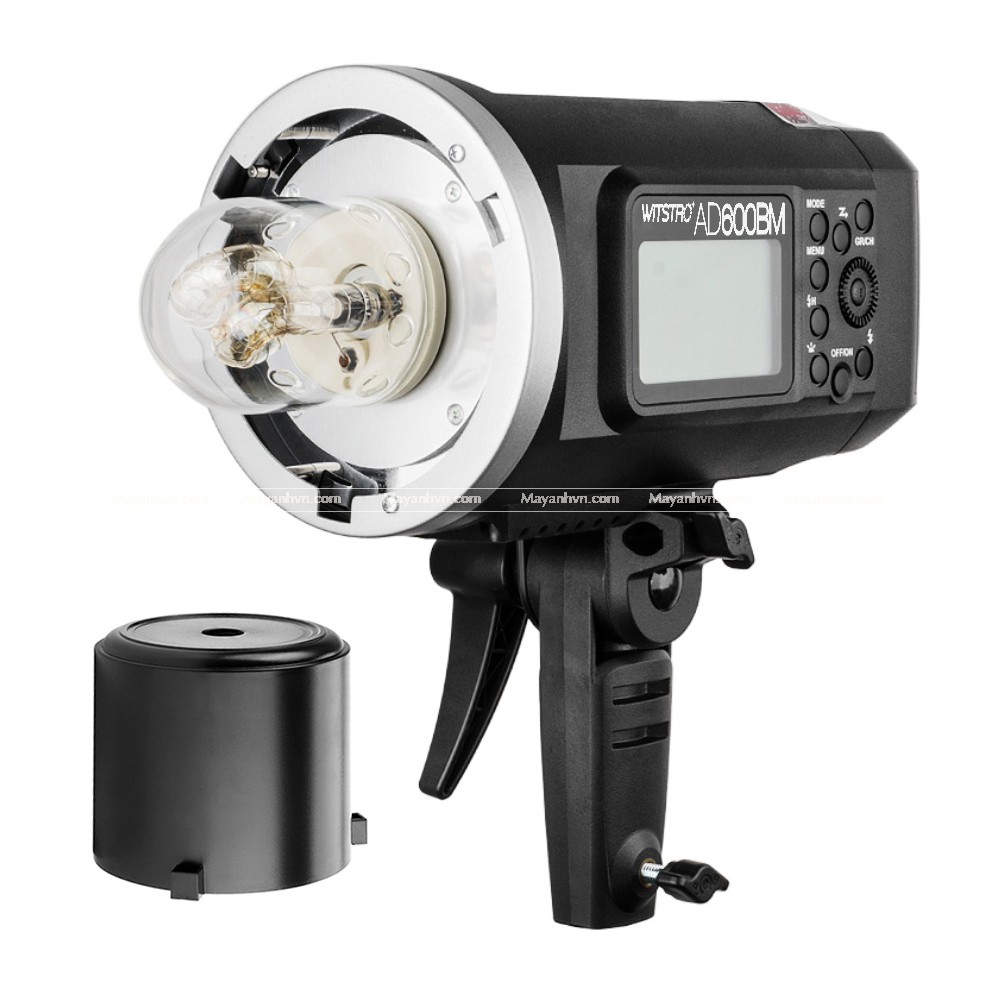
 0 đánh giá
0 đánh giá


